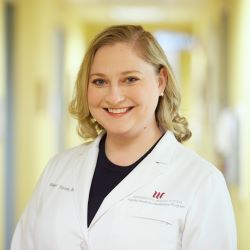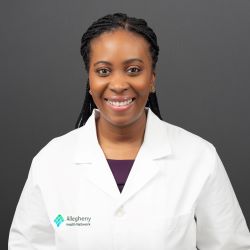Last Updated: Dec 9, 2022


Over the last couple of years, health care organizations have recognized a growing responsibility for improving diversity, equity, and inclusion not only for their employees to better serve its patients and their families.
As part of that effort, Tajh Ferguson, M.D. became the first person to serve as the Associate Designated Institutional Officer for Diversity, Equity, and Inclusion at Allegheny Health Network.
Through this role, she is helping to build programing to support medical trainees that are underrepresented in medicine and to recruit trainees to the institution.
Dr. Ferguson said, “Our hope is that in supporting them they feel like they want to stay on, and we want to retain people as faculty. We are doing faculty developments and really trying to create a culture where trainees feel included and belong.”
She said that research has shown that when racial and gender characteristics were shared between patients and their physicians, there was higher satisfaction with patient compliance and patient satisfaction.
“We see that marginalized communities benefit from a diverse physician workforce because you feel like you’re heard and advocated for.”
For Bridget Peterson, M.D. a family physician with the Washington Health System, teaching diversity, equity and inclusion to residents was part of her project during her fellowship. It was a 12-hour curriculum like looked at systemic racism and health inequities, and health needs data in Washington County and what barriers those communities face.
In recent discussions, they addressed the push to remove race as a factor in clinical algorithms when determining the risk for diseases.
Dr. Peterson said, “It’s a pretty big deal. It raises so many questions – some of these algorithms that we’re using, for example in determining risk in cardiac disease, you get a point if a person is say, black or not. And the question is whether that is reflecting biology or reinforcing inequities that we have created.”
Part of that curriculum also addressed caring for LGBTQ patients and how to make a more inclusive office environment and clinical education on gender affirming care and what local resources the community has.
“We had members of the community join us and very graciously share their experiences with health care. Which was really impactful.”
The work in creating a diverse workforce in health organization is impactful for patients even if they are of different culture backgrounds and gender.
Dr. Ferguson said, “Even a physician who doesn’t have the same background, since they’re trained in this environment is still going to have an impact on the patient.”
She said this type of education is important not only for the newest generation of physicians but for physicians who have been training for a long time, as well.
“It’s not just educating this new group of physicians but also educating the physicians who came up through practicing when these pieces were not necessarily in the trainings. That’s where the real impact comes. We see improved outcomes when we look at a diverse workforce.”